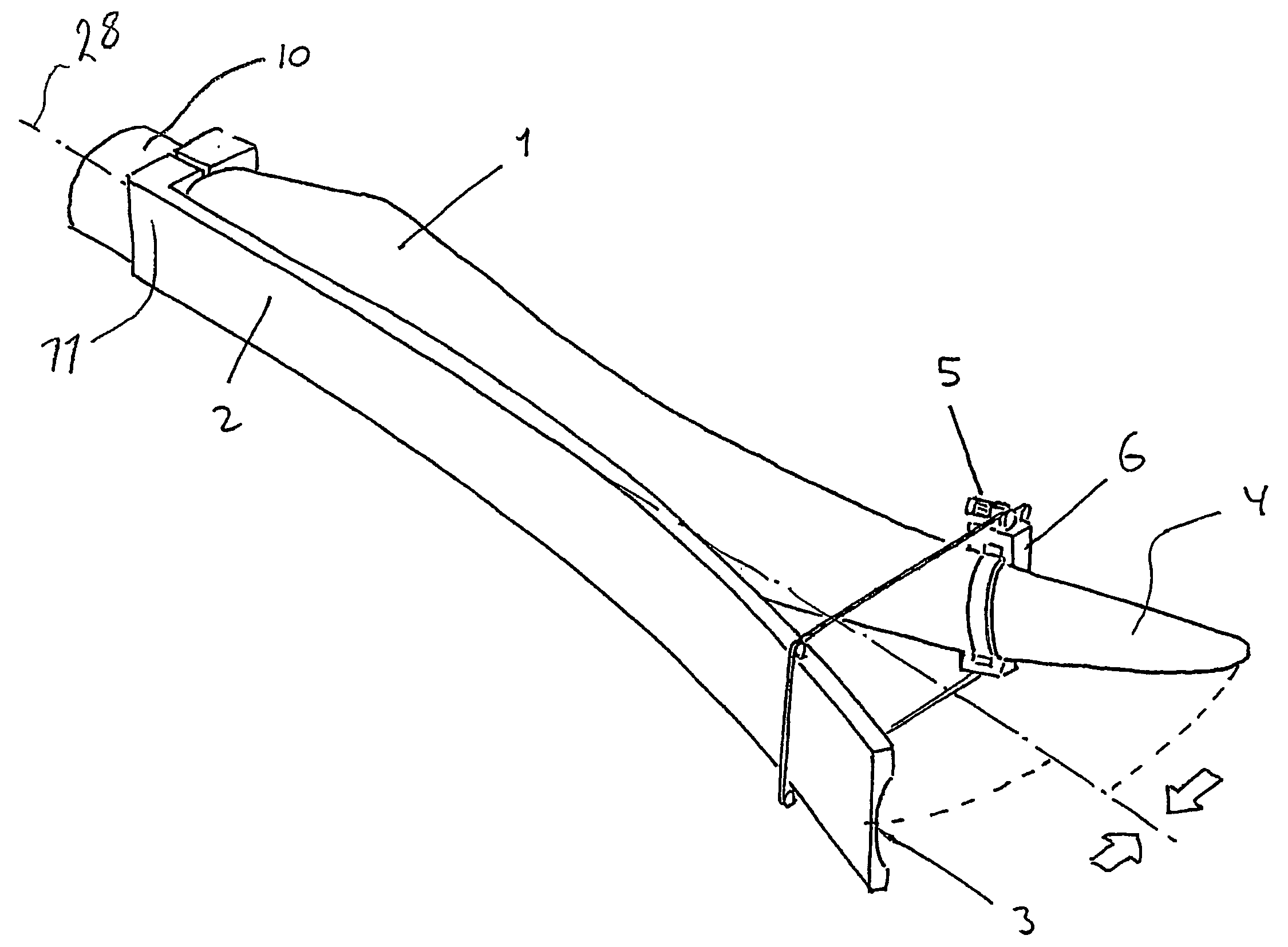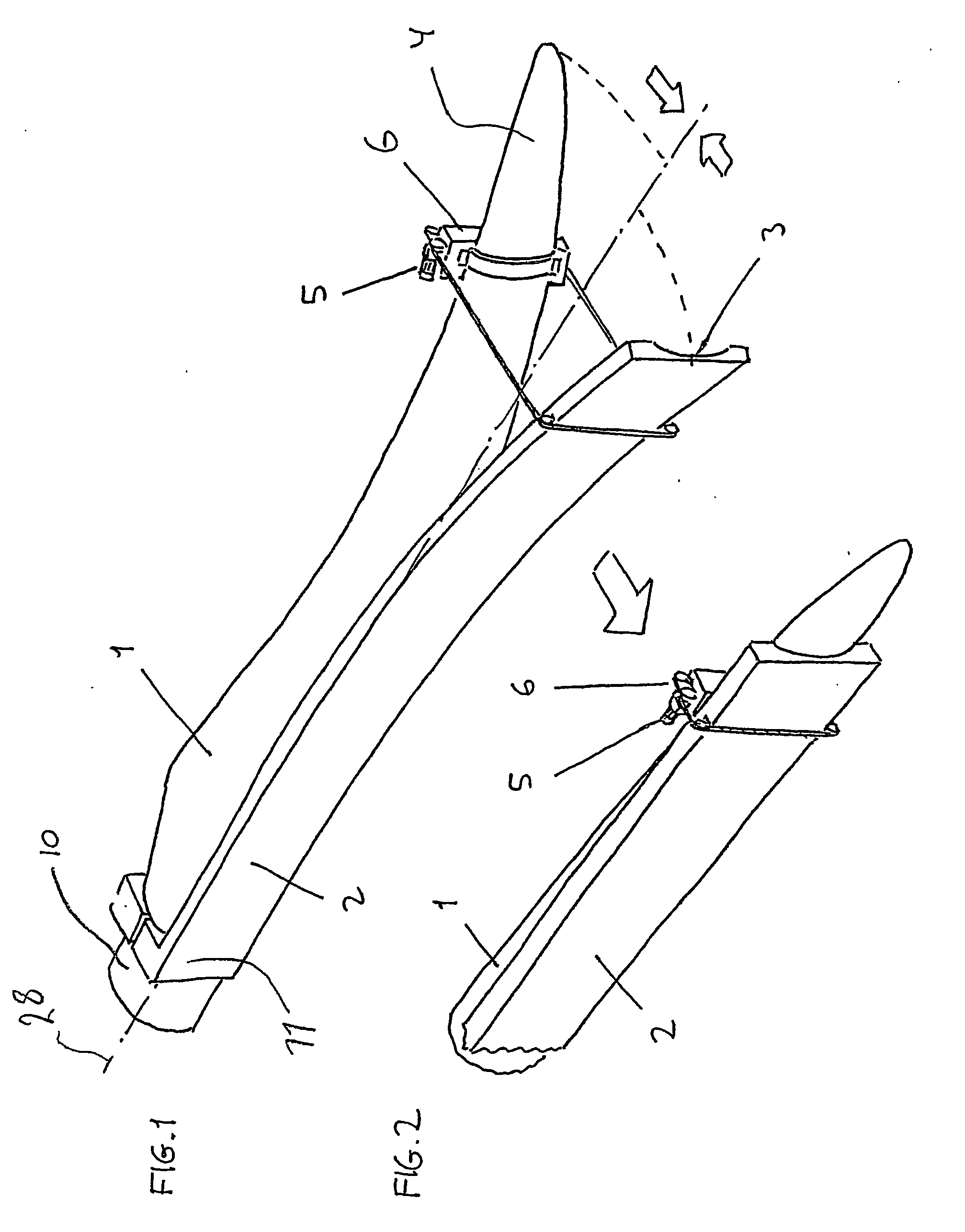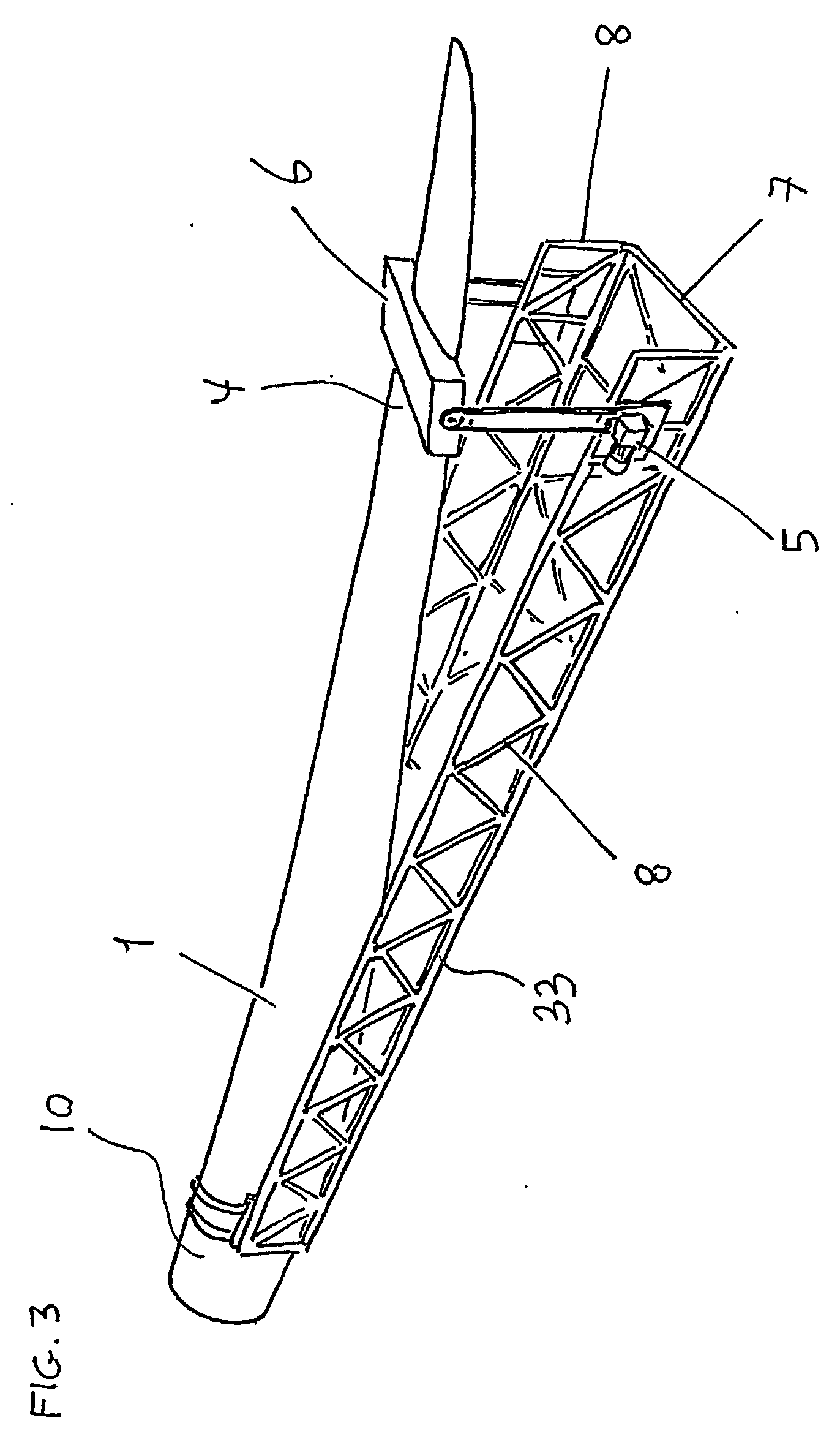Transporting and storing curved wind turbine blades
a technology of wind turbine blades and curved blades, which is applied in the direction of wind motors with parallel air flow, transportation items, wind energy generation, etc., can solve the problems of not being able to transport curved blades under bridges and tunnels, and achieve the effect of facilitating the storage and transportation of curved blades
- Summary
- Abstract
- Description
- Claims
- Application Information
AI Technical Summary
Benefits of technology
Problems solved by technology
Method used
Image
Examples
Embodiment Construction
[0055]FIG. 1 shows a resilient curved blade 1 mounted on a resilient counterpart 2 having an inner outline 3 adapted to the outer outline of the blade. The resilient counterpart is secured to the blade 1 at the root 10 thereof by means of root fittings 11 receiving the cylindrical outline of the root 10. At the outermost portion of the counterpart 2 and the blade 1, a winch arrangement 5 is mounted by which the blade 1 and the counterpart 2 may be pulled towards each other and thereby straightened out, as shown in FIG. 2. The winch arrangement 5 shown may be removable and thereby mobile such that it may be used for prestressing several blades 1 for the same transport or storage. At delivery, the winch arrangement 5 may also be included and used for unpacking the prestressed blades 1. The longitudinal central axis of the blade root has been denoted by the reference numeral 28.
[0056]FIG. 3 shows a counterpart 33 structured as a rigid latticework which, in principle, is used in same w...
PUM
 Login to View More
Login to View More Abstract
Description
Claims
Application Information
 Login to View More
Login to View More - R&D
- Intellectual Property
- Life Sciences
- Materials
- Tech Scout
- Unparalleled Data Quality
- Higher Quality Content
- 60% Fewer Hallucinations
Browse by: Latest US Patents, China's latest patents, Technical Efficacy Thesaurus, Application Domain, Technology Topic, Popular Technical Reports.
© 2025 PatSnap. All rights reserved.Legal|Privacy policy|Modern Slavery Act Transparency Statement|Sitemap|About US| Contact US: help@patsnap.com



